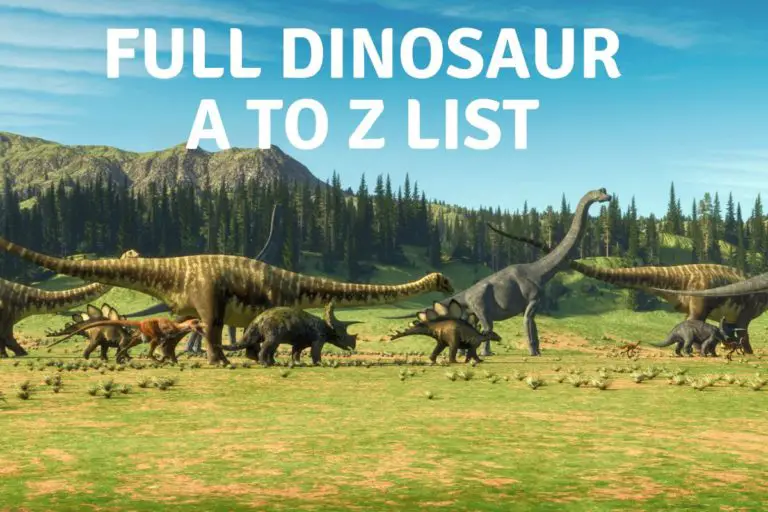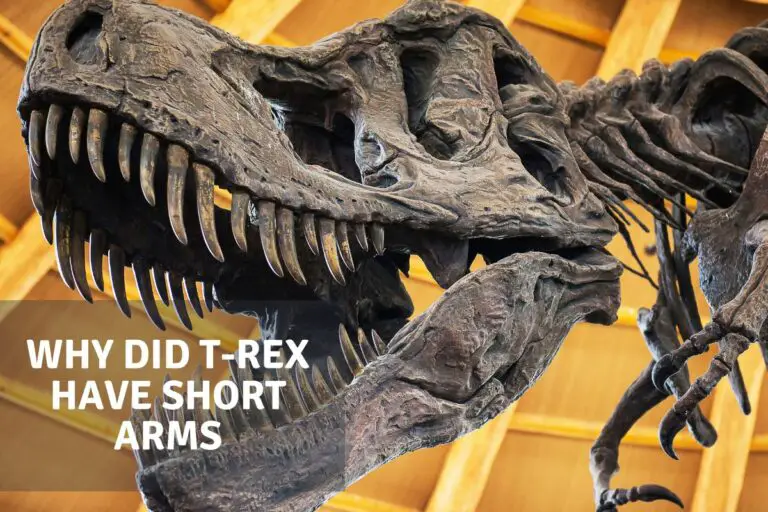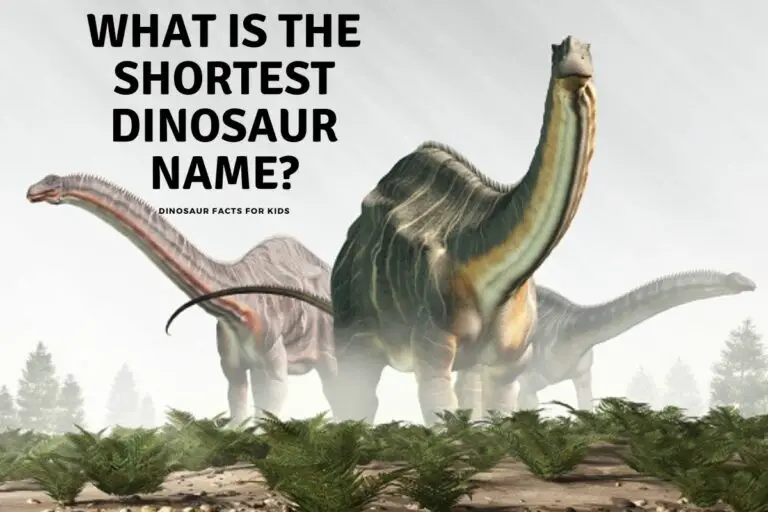What Was the Smallest Carnivorous Dinosaur?
When we think of dinosaurs, especially carnivores, we think of huge, lumbering monsters with teeth the size of swords and terrifying spear-like claws. As it happens, however, there were many carnivorous dinosaurs that were not the size of Tyrannosaurus rex, Allosaurus and others. Some were very small indeed.
The Mahakala is currently thought to have been the smallest carnivorous dinosaur, although this is based on partial remains. Other comparably small dinosaurs include Microraptor, which was potentially lighter than Mahakala, and Compsognathus which was considered the smallest carnivorous dinosaur for many years.
In this article, we’re going to take a closer look at these small carnivores, and in particular at the very smallest one. Read on to learn more.
What Was the Smallest Carnivorous Dinosaur?
Three main species of theropod are in contention for the title of “smallest carnivorous dinosaur,” with most evidence pointing to Mahakala as the smallest. It is believed that the small theropod lived during the later Cretaceous period and measured up to just 28 inches in length at the top end of estimates.
However, it should be noted that current knowledge of Mahakala is based on incomplete skeletal findings. We will take a look at it below in more detail though.
Unlike its other two small carnivore colleagues and likely challengers for the title of smallest dinosaur: Compsognathus and Microraptor, a complete specimen is yet to be found. The other two contenders for smallest dinosaur have numerous well-preserved specimens showing their real size.
For many years, it was believed that the smallest known carnivorous dinosaur was Compsognathus, and in particular the main single species Compsognathus longpipes.
One very well known fossil found in 1859 in Bavaria, Germany, led many to believe that Compsognathus longpipes was only about the size of a chicken.
However, subsequent discoveries have revealed that the German specimen was most likely a juvenile, as other confirmed Compsognathus longpipes specimens have been seen to be a little larger, about the size of a turkey.
The German specimen was about the same size as current estimates on Mahakala, but adult specimens are shown to be as large as 56 inches in length.
Another interesting fact about Compsognathus is that it is one of the only dinosaur species whose diet has been confirmed with absolute certainty. Most of the time, scientists make guesses based on the size and shape of the creature’s teeth, the nature of its digestive system, and possibly from remnants of stomach contents.
For Compsognathus longpipes, however, more intact remains of small lizards have been found preserved in their bellies. That includes the specimen found in Bavaria, and others found later.
Microraptor
We know that Mahakala and Microraptor both broadly belonged to the Dromaeosauridae family, with Mahakala falling into the Halszkaraptorinae group, and Microraptor into the Microraptoria group.
Microraptor was also among the smallest non-avian dinosaur species, typically measuring 2.53ft in length and having a wingspan of up to 3.08ft, but larger specimens have been found.
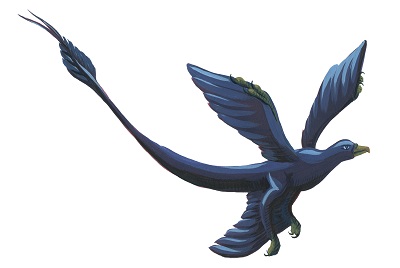
When it was alive, Mircroraptor was among the most common dinosaurs in its environment, which is also reflected in the high concentration of fossilized remains that have since been found in Liaoning Province, China. Whereas Mahakala has only had partial remains discovered, there have been more than 300 fossil specimens found of Microraptor remains.
One more interesting fact about Microraptor is that it was the first dinosaur that scientists could conclude had flight feathers on its fore and rear limbs.
It was assumed at first the Microraptor would use these feathers to glide across distances, but subsequent study of the aerodynamic features of the feathers have given rise to the opinion that Microraptor might have been capable of a degree of powered flight.
The Mahakala
The Mahakala dinosaur, (not the buddist or hindu god!, belongs to the Dromaeosauridae family of theropod dinosaurs. Discovered in the Djadokhta Formation of the Upper Cretaceous period in Mongolia, this dinosaur lived approximately 75 million years ago.
The name “Mahakala” is derived from the Sanskrit word for the Hindu deity of time and destruction, symbolizing the ancient age of this dinosaur, and also a protector of dhamma in Buddhism.
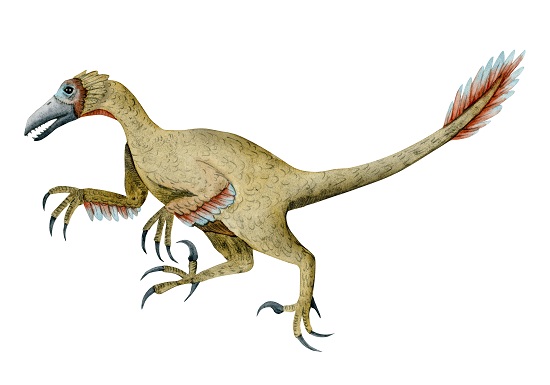
Measuring around 2 feet (0.6 meters) in length and weighing approximately 5.5 pounds (2.5 kilograms), Mahakala was a small and agile predator. Its size was similar to that of a modern-day turkey, making it one of the smallest known dromaeosaurids and dinosaurs.
Mahakala had sharp, serrated teeth and a large, curved claw on its second toe, which it likely used for hunting and self-defense.
Although it is close it does appear that Mahakala was the smallest carnivorous dinosaurs.
| Dinosaur | Length | Weight | Height | Where | When |
|---|---|---|---|---|---|
| Mahakala | 2 feet (0.6 meters) | 5.5 pounds (2.5 kilograms) | Unknown | Djadokhta Formation, Mongolia | Upper Cretaceous period, ~75 million years ago |
| Microraptor | 3 feet (0.9 meters) | 2.2 pounds (1 kilogram) | Unknown | Early Cretaceous, China | ~125-120 million years ago |
| Compsognathus | 3.3 feet (1 meter) | 6.6 pounds (3 kilograms) | Unknown | Late Jurassic, Germany and France | ~150 million years a |
How Did Compsognathus Compare to Other Dinosaurs?
They may not have known it when they discovered the creature, but Compsognathus longpipes was actually the very first theropod dinosaur that was successfully uncovered and identified through its bodily remains.
Specimens found showed a relatively complete fossilized skeleton. Its discoverers categorized Compsognathus initially as a regular lizard, not realizing that it was part of the larger theropod dinosaur family.
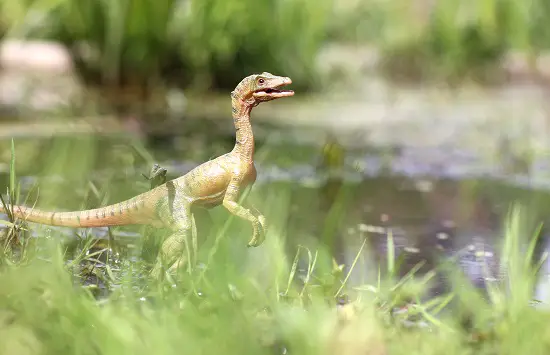
One of the most important comparisons ever carried out involving Compsognathus was conducted by Thomas Huxley in 1868 and 1870. Huxley was a major supporter of Darwin’s theory of evolution through natural selection, and compared Compsognathus with Archaeopteryx, which itself was thought to be the earliest known species of bird.
It was through his comparisons with Archaeopteryx that Huxley was able to reach his conclusion that modern birds must have evolved from dinosaurs, at the time a radical change in thinking.
Were There Other Smaller Carnivorous Dinosaurs?
Besides Compsognathus, Mahakala, and Microraptor, the dinosaur era was blessed with other small carnivore species, including (but not limited to) the following examples:
Archaeoceratops
Its Latin name has a noble bearing, but it translates perhaps slightly unfortunately to “ancient horned face.” Archaeoceratops lived in the early Cretaceous period and was found in what is now northern China. Remains reveal that it had a small frame and moved bipedally, but also had an interestingly enlarged head

Hesperonychus
As a dromaeosaurid dinosaur, Hesperonychus bore some resemblance to Microraptor, and was indeed part of the larger Microraptoria group. In this way it was also a cousin of the Velociraptor. Remains of Hesperonychus were first discovered back in 1982, with fossil evidence first being unearthed in Alberta, Canada. It is thought to have lived during the late stages of the Cretaceous period.
Parvicursor
This dinosaur’s full name is Parvicursor remotes, and had small, stubby limbs. At the end of these limbs was a large single claw, which scientists believe was used for digging out insect mounds.
If you’ve heard of Parvicursor and are wondering why it is that we haven’t listed it in our smallest dinosaur list, it’s because while it was once thought to be the smallest non-avian species, the specimen such assumptions were based on turned out to be a juvenile.
Yes, in a similar fashion to Compsognathus, Parvicursor too was subject to a fossilized misunderstanding. Early specimens were thought to be 1.28ft in length, but it was in 2022 that this “holotype” was actually a juvenile individual.
Almost the Smallest, but it was a lizard!
The smallest almost a dinosaur discovered is the Oculudentavis; it was about 1 Cm long and weighed less than 50 grams (0.05 kg), which is similar in size to a hummingbird. it was actually a lizard rather than a dinosaur, but so close!
The name chosen for this dinosaur means “eye-tooth-bird” because it has lots of teeth and very large eyes. It was also nicknamed “the cretaceous terror of insects” because researchers believe that it was a predator despite its small size.
This species lived over 99 million years ago, and its fossils were discovered inside a drop of amber. It sparked much debate among researchers as they couldn’t determine whether it was lizard-like or bird-like from its fossils. (since been agreed it was a lizard rather than a dinosaur – albeit a very strange looking lizard)
you can read about the smallest dinosaurs here on the site, we have an article on the smallest dinosaurs of all time here.
Conclusion
While there are plenty of small dinosaurs, despite the focus of movies and books being on their larger cousins. The smallest of these, just like the largest, is difficult to judge. While Compsognathus was thought of to be the smallest for many years new discoveries put that in doubt.
Mahakala seems to be, although only from limited fossils at the moment, to have taken the crown as the smallest carnivorous dinosaur of all time. At least for the moment…
References
- https://dinosaurfactsforkids.com/what-was-the-smallest-dinosaur-8-tiny-dinosaurs-that-you-need-to-know-about/
- https://dinosaurworldlive.com/blog/top-5-smallest-known-dinosaurs
- https://www.activewild.com/what-is-the-smallest-dinosaur/
- https://www.britannica.com/animal/Compsognathus
- https://dinopedia.fandom.com/wiki/Mahakala
Hi, I am Roy Ford a General Studies and English Teacher who has taught all over the world. What started as a fossil collection became a great way to teach, motivate and inspire students of all ages and all over the world about dinosaurs and from that and children’s love of dinosaurs came the site dinosaur facts for kids, a resource for all ages.

